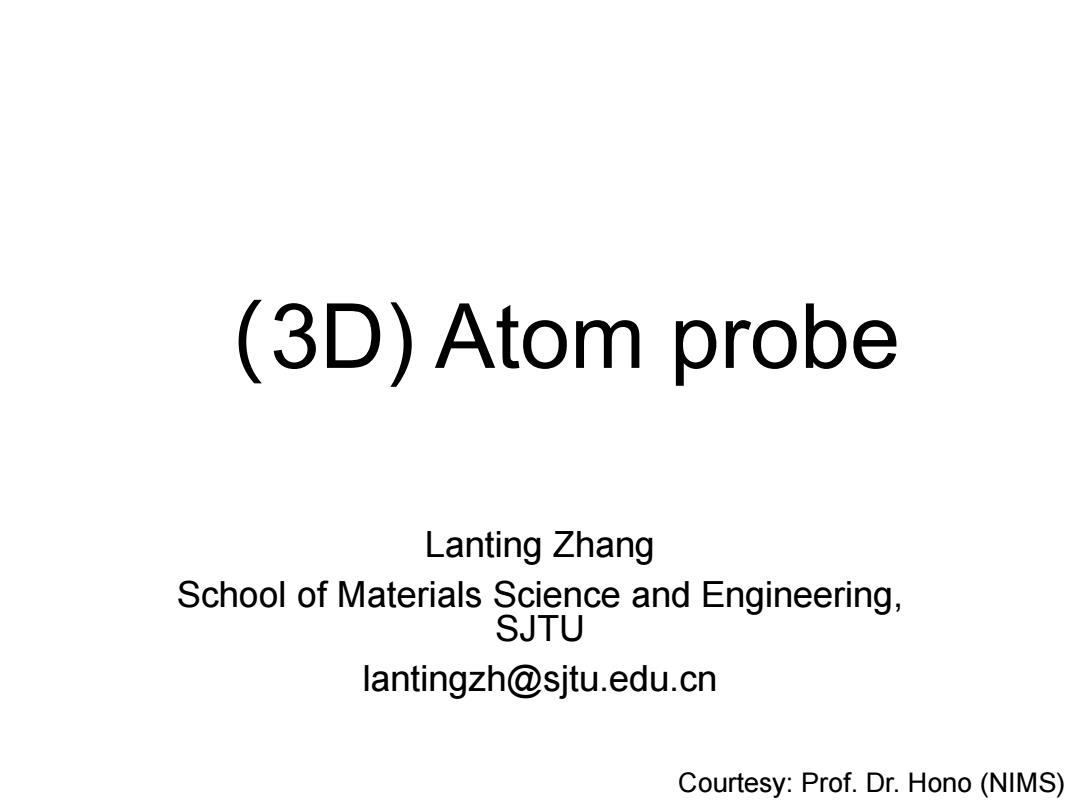
(3D)Atom probe Lanting Zhang School of Materials Science and Engineering SJTU lantingzh@sjtu.edu.cn Courtesy:Prof.Dr.Hono (NIMS)
(3D) Atom probe Lanting Zhang School of Materials Science and Engineering, SJTU lantingzh@sjtu.edu.cn Courtesy: Prof. Dr. Hono (NIMS)
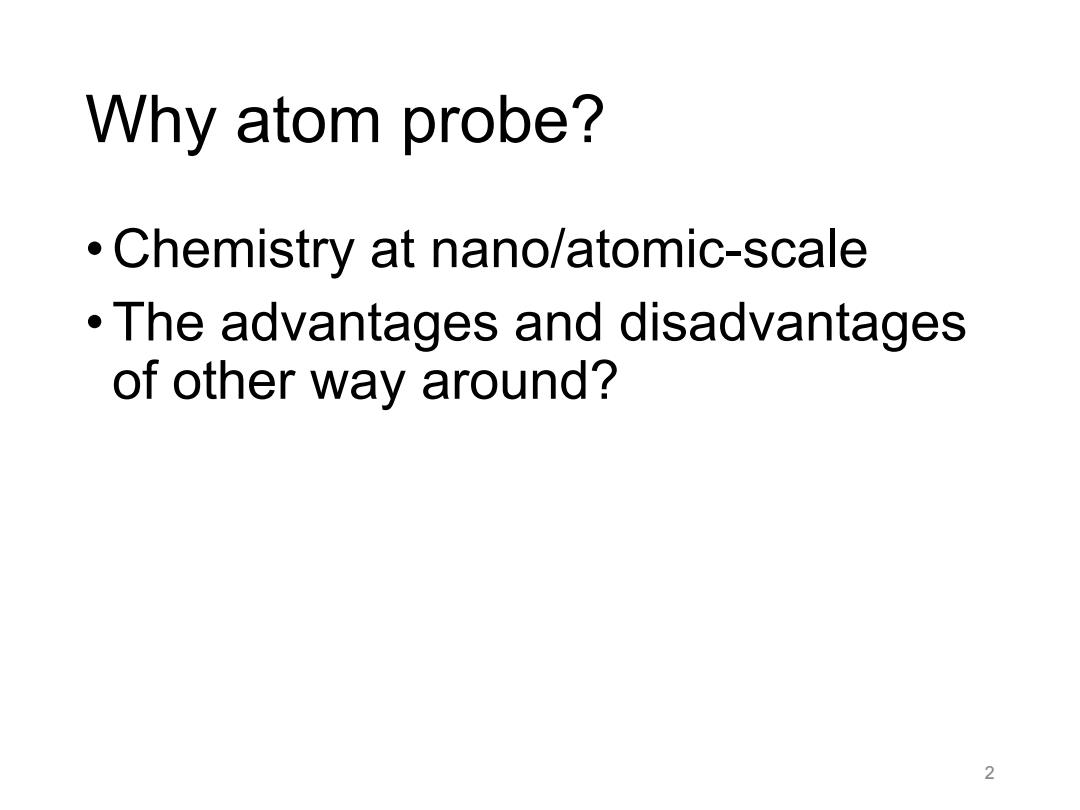
Why atom probe? Chemistry at nano/atomic-scale The advantages and disadvantages of other way around?
Why atom probe? • Chemistry at nano/atomic-scale •The advantages and disadvantages of other way around? 2
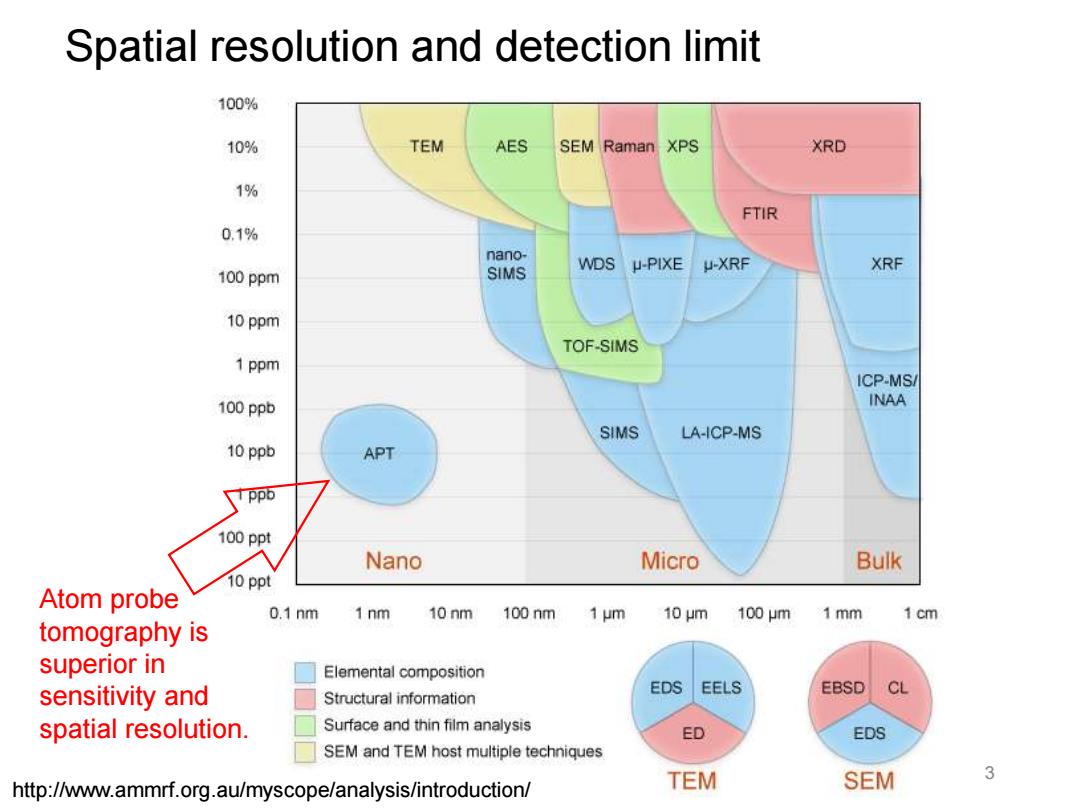
Spatial resolution and detection limit 100% 10% TEM AES SEM Raman XPS XRD 1% FTIR 0.1% nano- SIMS WDS U-PIXE U-XRF XRF 100 ppm 10 ppm TOF-SIMS 1 ppm ICP-MS/ 100 ppb INAA SIMS LA-ICP-MS 10ppb APT Tppb 100 ppt Nano Micro Bulk 10 ppt Atom probe 0.1nm 1 nm 10 nm 100nm 1μm 10 um 100μm 1mm 1 cm tomography is superior in Elemental composition sensitivity and EDS EELS EBSD CL Structural information spatial resolution. Surface and thin film analysis ED EDS SEM and TEM host multiple techniques 3 http://www.ammrf.org.au/myscope/analysis/introduction/ TEM SEM
Spatial resolution and detection limit 3 http://www.ammrf.org.au/myscope/analysis/introduction/ Atom probe tomography is superior in sensitivity and spatial resolution
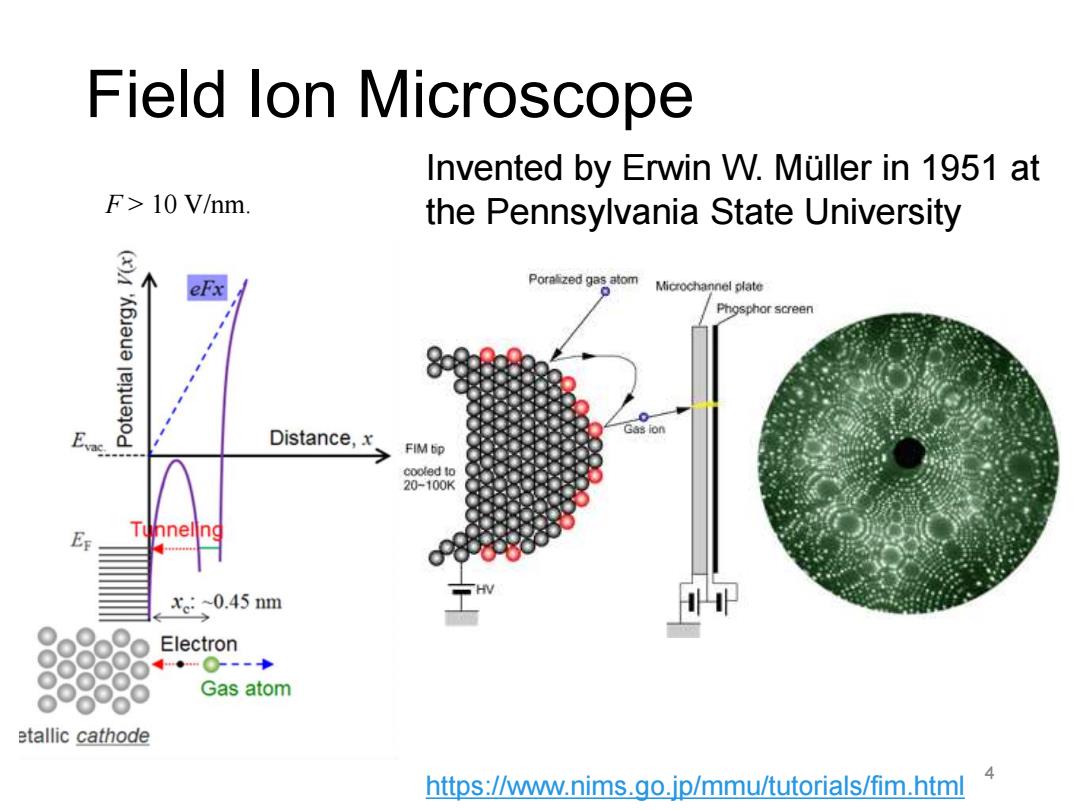
Field lon Microscope Invented by Erwin W.Muller in 1951 at F>10 V/nm. the Pennsylvania State University eFx Poralized gas atom Microchannel plate Phosphor screen Distance,x Gas ion E、w FIMbp cooled to 20-100K Tunnelng xe:-0.45 nm 88 Electron 4◆0--声 Gas atom etallic cathode https://www.nims.go.jp/mmu/tutorials/fim.html
Field Ion Microscope F > 10 V/nm. https://www.nims.go.jp/mmu/tutorials/fim.html Invented by Erwin W. Müller in 1951 at the Pennsylvania State University 4
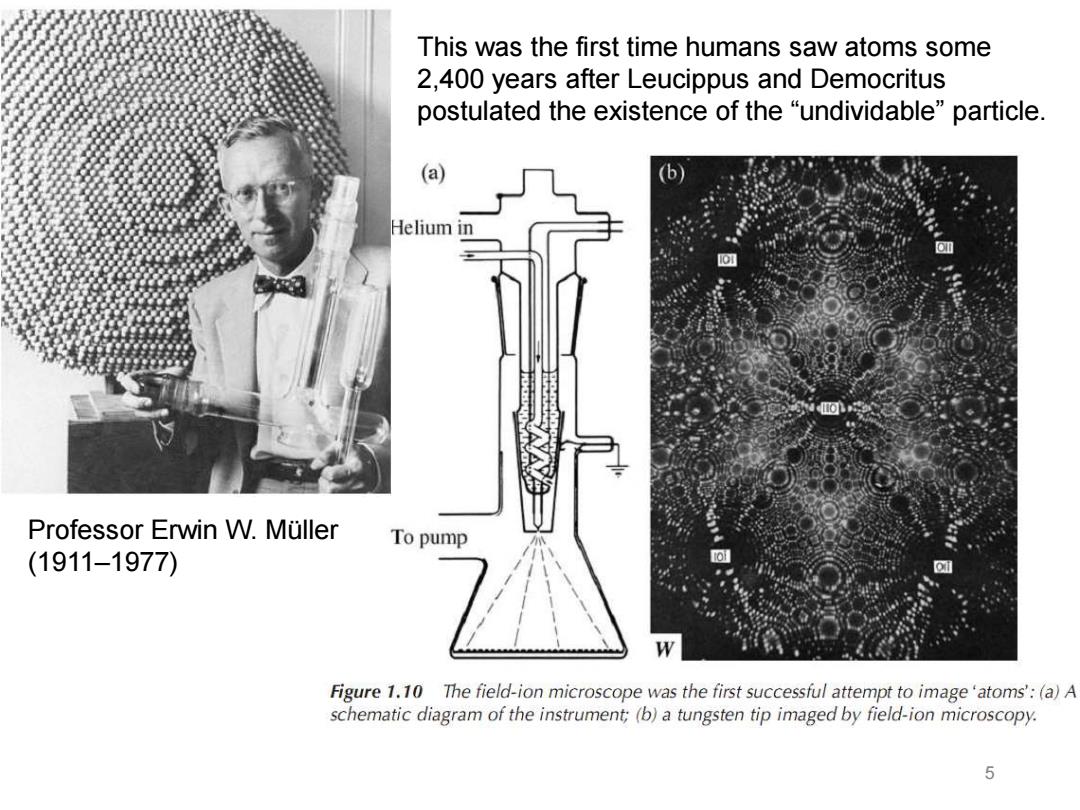
This was the first time humans saw atoms some 2,400 years after Leucippus and Democritus postulated the existence of the "undividable"particle. (a) (b Helium in Professor Erwin W.Muller To pump (1911-1977) W Figure 1.10 The field-ion microscope was the first successful attempt to image'atoms':(a)A schematic diagram of the instrument;(b)a tungsten tip imaged by field-ion microscopy. 5
5 Professor Erwin W. Müller (1911–1977) This was the first time humans saw atoms some 2,400 years after Leucippus and Democritus postulated the existence of the “undividable” particle